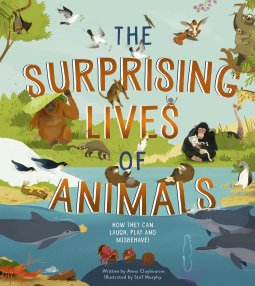Audiobook Review: The Creative Lives of Animals by Carol Gigliotti, Narrated by Sheri Saginor
Book Review: Two Heads: A Graphic Exploration of How Our Brains Work with Other Brains by Uta Frith; Chris Frith; Alex Frith
Two Heads: A Graphic Exploration of How Our Brains Work with Other Brains was written by Uta Frith, Chris Frith, and Alex Frith, and illustrated by Daniel Locke. Professors and husband-and-wife team Uta and Chris Frith have pioneered major studies of brain disorders throughout their nearly fifty-year career. Here, in Two Heads, their distinguished careers serve as a prism through which they share the compelling story of the birth of neuroscience and their paradigm-shifting discoveries across areas as wide-ranging as autism and schizophrenia research, and new frontiers of social cognition including diversity, prejudice, confidence, collaboration, and empathy. Working with their son Alex Frith and artist Daniel Locke, the professors examine the way that neuroscientific research is now focused on the fact we are a social species, whose brains have evolved to work cooperatively. They delve into a wide range of complex concepts and explain them with humor and clarity. You’ll discover what happens when people gather in groups, and how people behave when they’re in pairs—either pitted against each other or working together. Is it better to surround yourself with people who are similar to yourself, or different? And, are two heads really better than one?
Two Heads offers readers a solid understanding of the brain, and all it wonders and misfires. I like that opposing viewpoints are mentioned, and that the fact that these two experts openly admit that they disagree on some topics. I like how the text makes it clear what experts think they know, that there are various schools of thought, and just how much we still have to learn. It is when scientists or experts proclaim that we have all the answers that they loose credibility with me. I thought the illustrations were charming, and I liked the labels, humor, and hidden details which made each page more engaging and interactive. I think it was written in a very accessible style, with humor and explanations that really work. I found the personal touches and side comments made the book more entertaining and broke up some of the more intense teaching moments to help readers process. I think it is honestly approachable to any reader interested in the subject matter. As expected of a book from scholars and professionals, the footnotes and endpages were on point and well done. I think this would be a great addition to libraries, particularly graphic medicine collection (I will be recommending it for my own workplace just for that reason).





